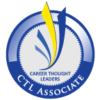How to Write ECQs Using CCAR

The following post explores How to Write ECQs Using CCAR.
Looking to land a Senior Executive Service (SES) role? If so, you’ll need Executive Core Qualification (ECQ) statements that demonstrate your leadership acumen.
Read: How to Make a Federal Resume
Related: Best Federal Resume Writing Services
Hot Topic: Navigating Major SES Changes
Before you can start writing your ECQs, it’s important to understand what the CCAR format is and how you’re expected to articulate your leadership experiences in written form.
Here’s what you need to know.
Overview
Executive Core Qualifications (ECQs) are critical components of applications for Senior Executive Service (SES) positions within the U.S. federal government.
Designed to assess leadership competencies, ECQs highlight key achievements in five core areas: Leading Change, Leading People, Results Driven, Business Acumen, and Building Coalitions.
To craft compelling ECQs, the Challenge-Context-Action-Result (CCAR) model is a structured and effective approach that ensures your stories are impactful and align with government standards.
Selecting ECQ Stories
Before you begin writing your ECQs, you must first determine the subject matter. This requires selecting five distinct stories – one for each ECQ – that effectively demonstrate your leadership competencies.
The stories you select will form the foundation of your ECQs, so it’s important to select stories that showcase your leadership skills and align with the ECQ categories.
CCAR Overview (Challenge, Context, Action, Result)
The CCAR format (Challenge, Context, Action, Result) is a structured method used to craft impactful and results-driven narratives. It ensures your experiences are presented in a logical and compelling way.
- Challenge identifies the problem or obstacle you faced.
- Context provides background information to set the scene.
- Action highlights the steps you took to address the issue
- Result showcases the measurable impact of your efforts.
Most SES job applications expect ECQs to be written in the CCAR format. This adds a layer of complexity, as it demands that your ECQs not only convey the content but also adhere to the CCAR structure.
Challenge (C)
The “Challenge” section outlines the problem or obstacle you were facing. This is where you identify the key issue or difficulty that required your attention.
Begin each story by describing the specific challenge you faced. What was the problem or obstacle? Why was it significant? Provide enough detail to illustrate the complexity of the situation, but keep it concise.
Context (C)
The “Context” section provides the background that helps the reader understand the environment in which you were working. This is where you set the scene for the challenge.
Try to explain the context surrounding the challenge. Where were you working, and what role did you play? Provide background on the organization or project to help the reader understand the environment and stakes.
Acton (A)
The “Action” section is where you focus on the steps you took to address the challenge. It details the leadership and decisions that contributed to solving the problem.
Describe the specific actions you took to address the challenge. Focus on your leadership and decision-making skills—what did you personally do to drive success? Be detailed but avoid a laundry list of tasks.
Result (R)
The “Result” section highlights the outcomes of your actions and the impact you made. This is where you showcase the measurable success or improvements achieved.
What was the tangible impact of your actions? Include metrics like %, $, or specific achievements when possible. If the results were qualitative, describe the lasting changes your leadership created.
In Conclusion
In conclusion, I hope this article helps with understanding how to write ECQs using CCAR. It’s definitely not an easy exercise! SES roles are highly competitive and federal agencies rely on this difficulty for weeding out candidates who are unable to meet the rigorous expectations.
For professional assistance developing your ECQs, please see our signature ECQ service.








